CompTIA Security+ Certification
Security Management
Monitoring and Revisions
Hi, and welcome back! In this lesson, we dive into the critical aspects of effective security governance, focusing on continuous monitoring, periodic revisions of security practices, and an in-depth review of various governance structures.
Effective security governance ensures that organizational security measures are in line with business objectives and remain adaptable against evolving threats. This lesson emphasizes the need for ongoing monitoring, timely policy revisions, and smart governance models to establish and maintain a robust security posture.
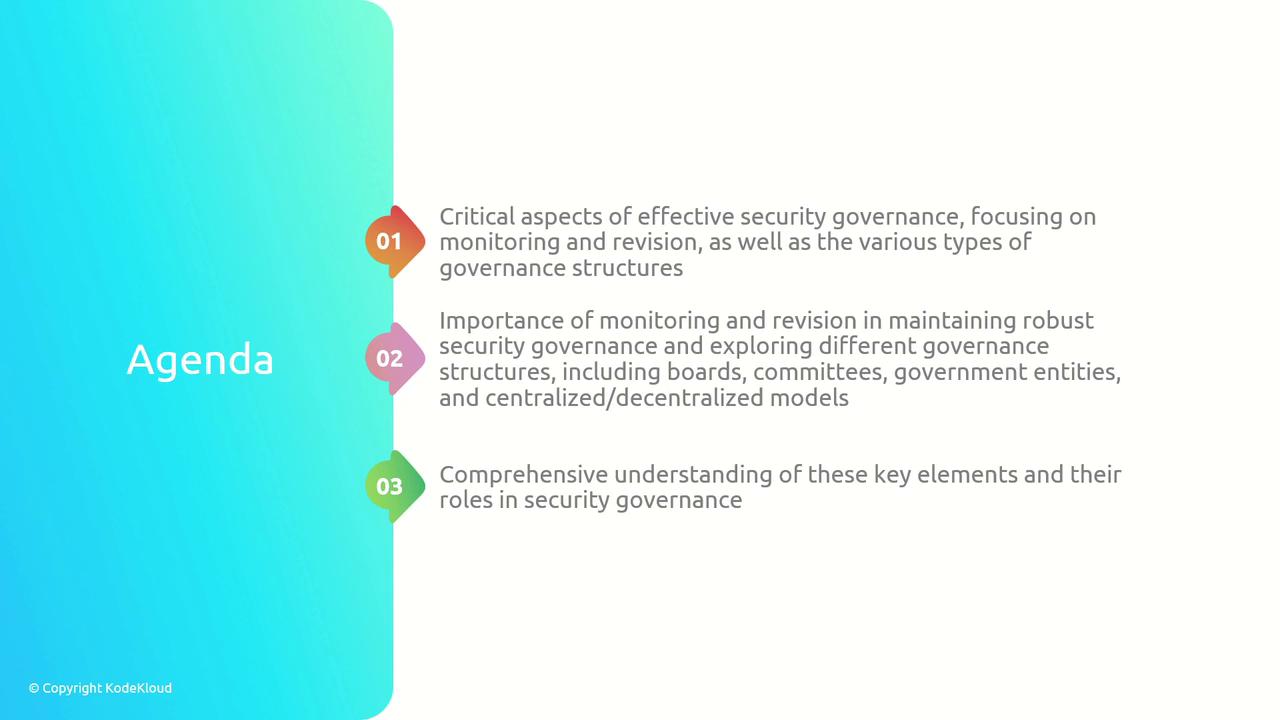
Continuous Monitoring and Revisions
Continuous monitoring and regular revisions are essential for maintaining an up-to-date security framework. These processes allow organizations to assess the effectiveness of their security measures, identify vulnerabilities, and adapt to new threats quickly.
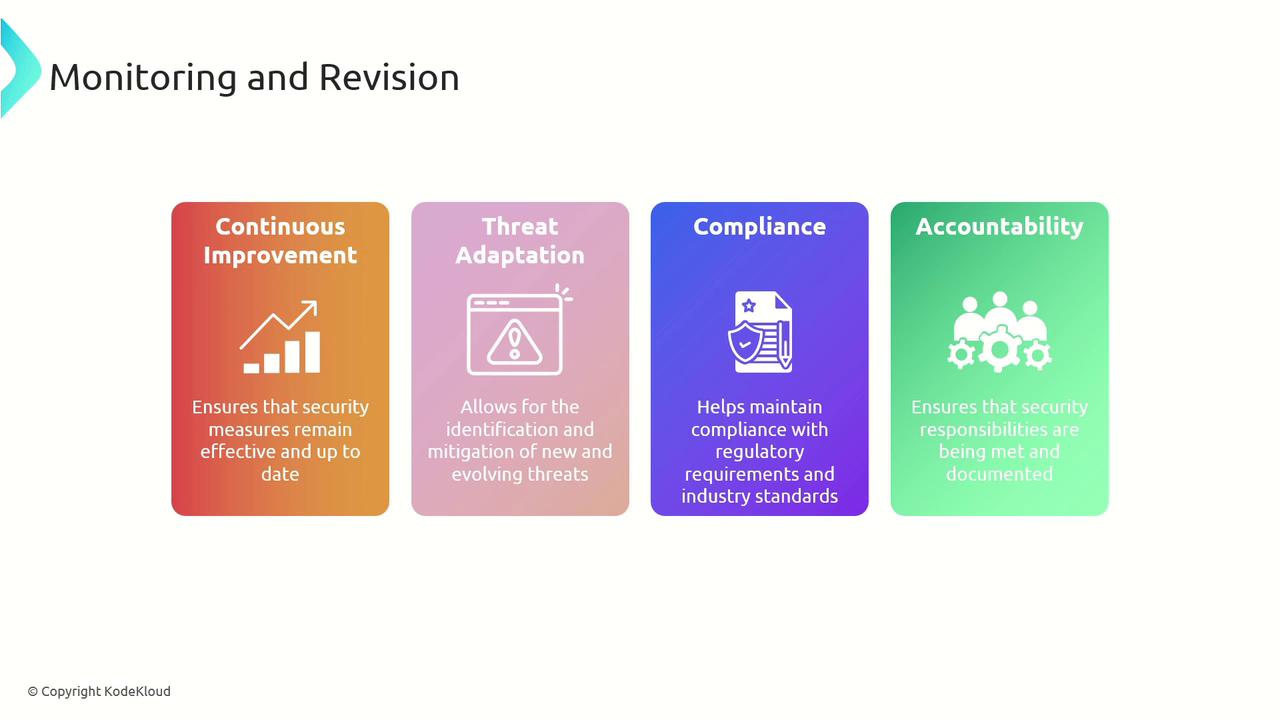
Key activities in this process include:
Regular Audits and Assessments:
Systematic reviews of security policies, procedures, and controls help pinpoint weaknesses, confirm compliance with laws and standards, and reveal opportunities for enhancement.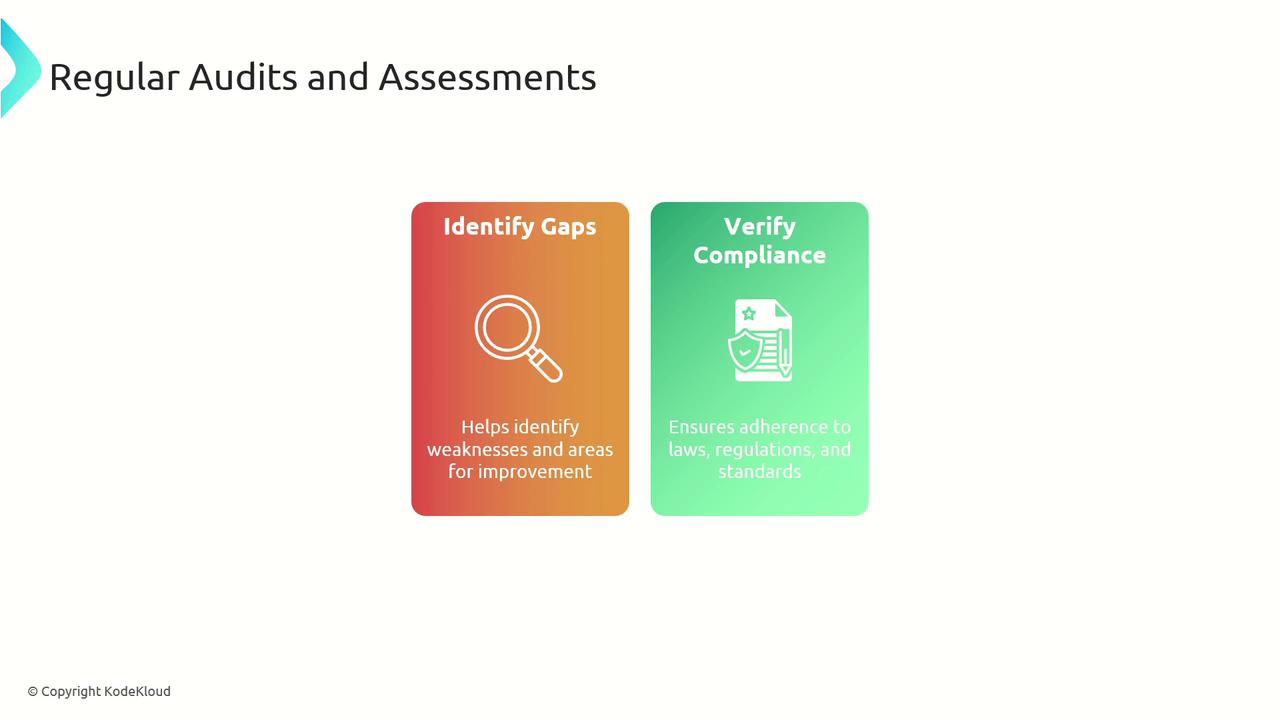
Continuous Monitoring:
Real-time tracking of security events and system performance can detect anomalies early, enabling organizations to respond swiftly to potential incidents. For example, implementing a Security Information and Event Management (SIEM) system can help monitor network traffic and flag suspicious activities.Policy and Procedure Revisions:
Regular updates to security policies and organizational procedures are crucial. By revising policies—such as those related to incident response to include scenarios like ransomware attacks—organizations remain prepared to tackle emerging threats.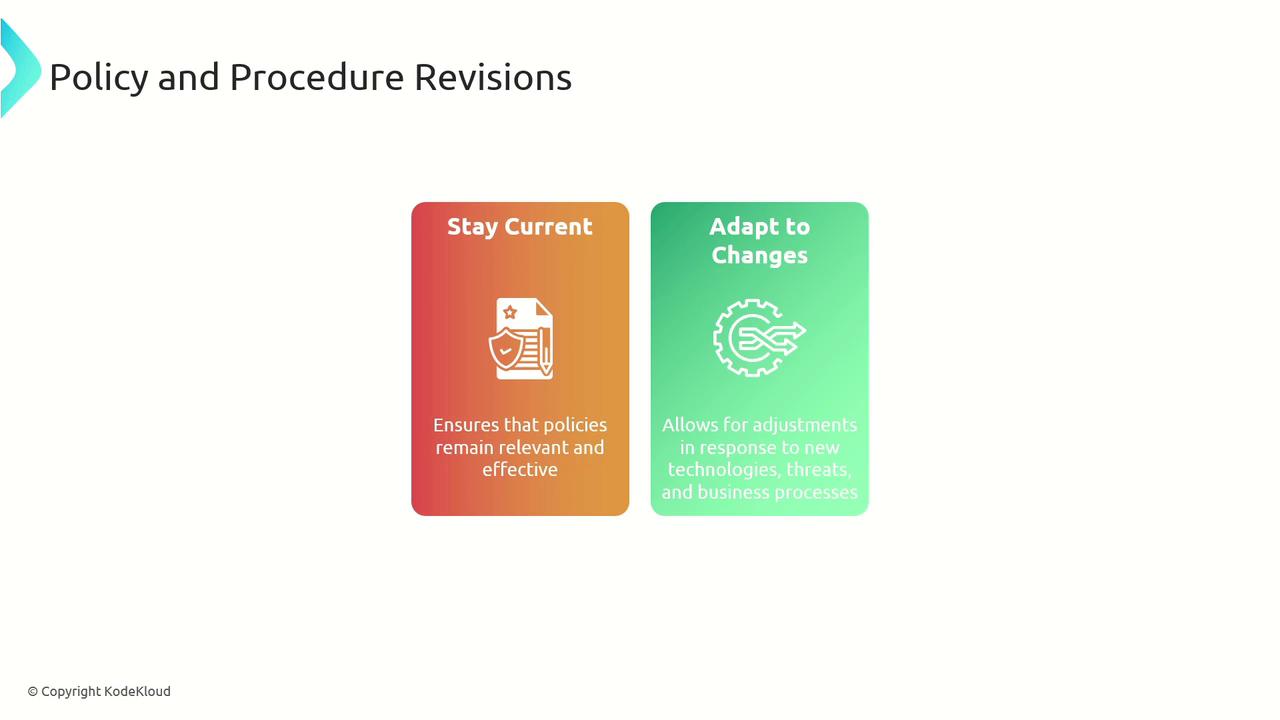
Note
Keep in mind that regular policy reviews are essential for adapting to the rapidly changing threat landscape and evolving technology.
Governance Structures
A variety of governance structures exist to guide and oversee security initiatives. Each structure plays a distinct role in ensuring that comprehensive security measures are implemented and maintained throughout the organization.
Boards
Boards, such as boards of directors or advisory boards, are central to defining an organization's security strategy. They provide strategic oversight and hold the organization accountable by setting high-level security directions and ensuring alignment with business objectives.

Committees
Specialized committees focus on specific areas like risk management and compliance. By leveraging expert knowledge, these committees offer detailed oversight and help implement targeted security solutions.
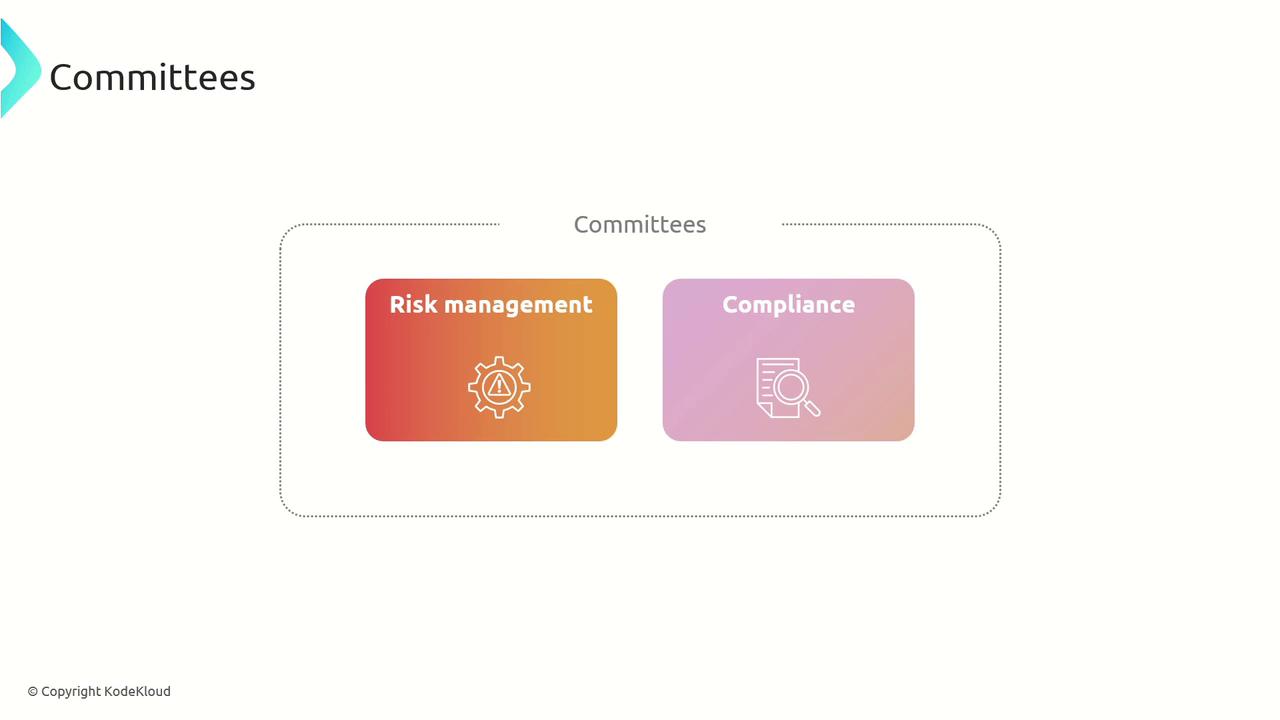
Government Entities
Government entities are responsible for establishing security regulations, standards, and guidelines. Their influence is critical for ensuring standardization and regulatory compliance. For example, the National Institute of Standards and Technology (NIST) provides widely adopted cybersecurity frameworks and guidelines.
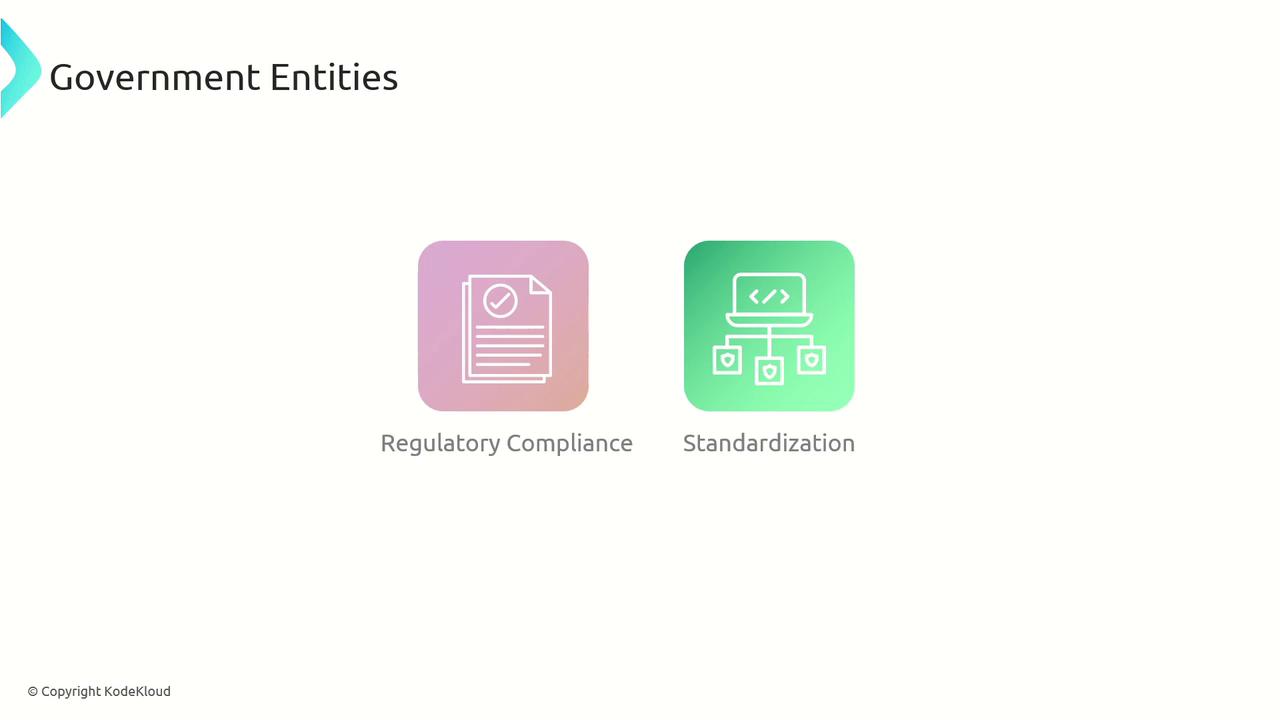
Centralized vs. Decentralized Governance
Centralized Governance:
With a centralized approach, a single authority manages all security functions, ensuring consistency, streamlined decision-making, and efficient resource allocation. A central security team reporting directly to the Chief Information Security Officer (CISO) exemplifies this model.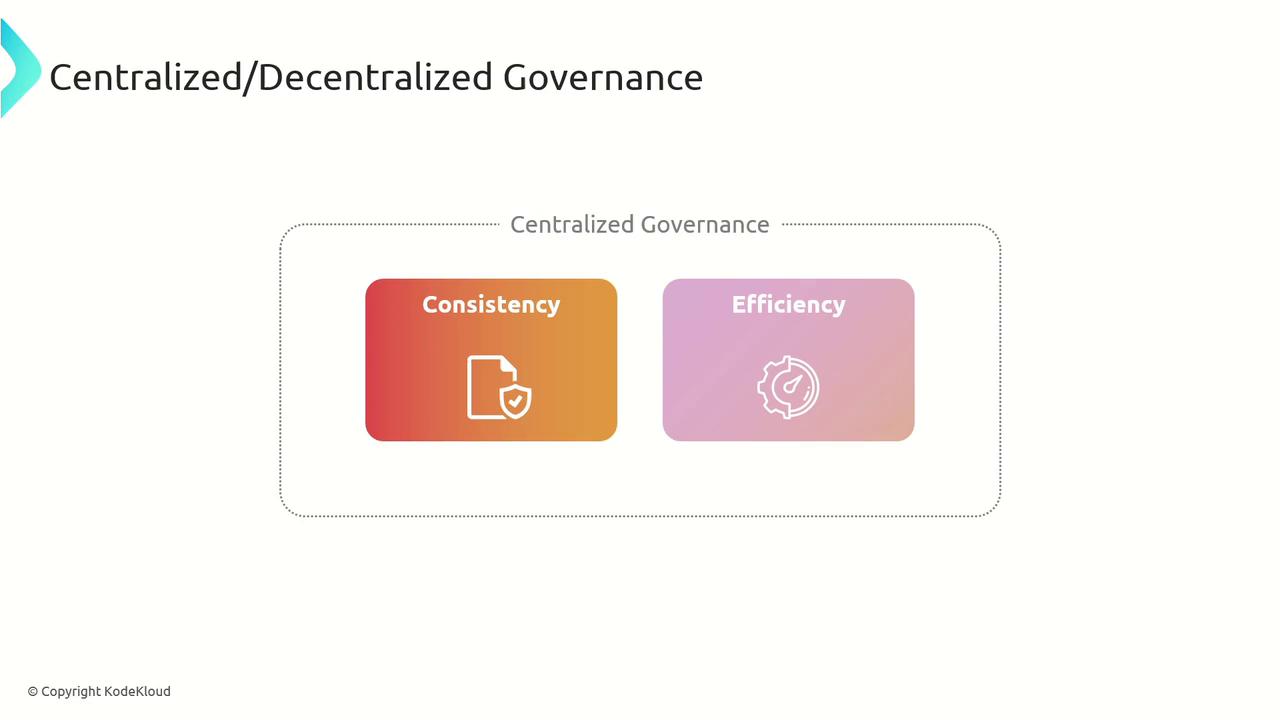
Decentralized Governance:
In contrast, decentralized governance distributes security responsibilities across multiple departments. This model offers flexibility and rapid response by tailoring security measures to specific departmental needs. For instance, each department might have its own security officer who collaborates with a central security committee.
Note
Both centralized and decentralized governance models have their merits. Organizations should choose the structure that best aligns with their operational needs and risk profile.
Conclusion
In summary, effective security governance hinges on continuous monitoring and timely revisions to ensure that security practices remain agile and effective. Whether through boards, committees, government entities, or centralized vs. decentralized models, adopting the right governance structure is key to robust risk management and regulatory compliance.
Thank you for following along in this lesson. For further reading, you might explore the Kubernetes Documentation or Docker Hub for related technical insights.
Watch Video
Watch video content